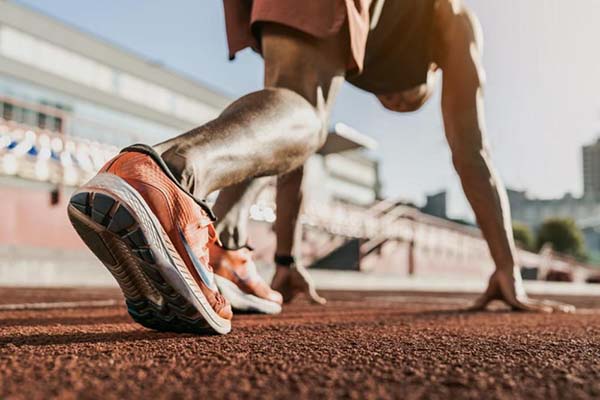15 is the age when most of us are constantly confused about everything, from the changes to our physical attributes to the new feelings and emotions that we have never felt before. It is also the growing stage where you are subject to high levels of self-consciousness caused by different signs of puberty such as acne, deepening of the voice, growth of body hair, or height growth.
Along this line, many may feel that they are seriously lagging behind when all of their friends have suddenly hit a growth spurt, or that something is wrong with them when they are not as tall as the rest of their family. The truth is, while a person’s height is largely controlled by genes that are out of their control, there are many factors that affect height during your growing years. These factors can be influenced to facilitate optimal conditions for not only your height growth but also your overall development. Let’s find out the most effective tips on how to grow taller at 15 in this article.
Eating a healthy and balanced diet
The role of nutrition in your height growth can be likened to that of building materials in construction. Without these materials, you cannot build a small house, let alone those skyscrapers that many people marvel at. Likewise, without proper nutrition, your body cannot grow and you may eventually fail to reach your maximum potential height. To avoid this problem, consuming a healthy and balanced diet is the best solution. Your daily diet should include:

- Plenty of lean protein. Lean protein such as nuts, soy, and beans helps promote healthy bone and muscle growth. On the contrary, stay away from simple carbohydrates like cakes, pizzas, sweets, and soda.
- Plenty of calcium. Found in leafy green vegetables such as kale and spinach or in fortified foods, calcium triggers bone growth and enhances bone health.
- Enough vitamin D. Vitamin D stimulates muscle and bone growth in children and teenagers. A deficiency in this vitamin can stunt growth and result in weight gain for teenage girls. You can find modest amounts of vitamin D in mushrooms and alfalfa as well as vitamin D-fortified foods like cereals or milk. Yet, the best way to gain sufficient vitamin D is through sunlight exposure. You can get enough vitamin D simply by spending about 15 minutes a day out in the sun.
- Enough zinc. A lack of zinc can lead to stunted growth. Hence, try to include peanuts, wheat germ as well as pumpkin and squash seeds in your everyday meals.
Exercising regularly
Getting regular exercise will help you grow taller at 15 as it boosts growth hormone production naturally and fosters healthy bone growth. As a result, instead of sitting at home playing with your smartphones, go out and work your muscles for at least 60 minutes every day. To start your sporty life, you should consider:

- Joining a sports team. Thanks to their natural competitiveness, people who join sports teams can both get their bodies taller and burn extra calories. The wonderful thing about team sports is that you do not realize half of the time that you are exercising.
- Joining a gym. This is where a lot of great muscle-building and exercising machines are available and accessible for you to use. You also have more motivation to work out as it would look awkward if you are not exercising when you are at the gym.
- If you do not like either option, you can just walk around. Getting up and walking around may benefit you in many ways, including your height growth. Try to walk to the grocery store, to the library, or to school from now on.
Getting adequate sleep every night
Human growth hormone is naturally produced in the pituitary gland in our bodies; its levels increase during deep or slow-wave sleep. For this reason, getting sound and good sleep will encourage the production of this hormone. Besides, sleeping is the time when your body recovers and grows. By having adequate sleep each night, you are allowing your body more time for growth. For 15-year-old teenagers, you should get from 9 to 11 hours of sleep every night.

Trying not to stunt your growth
Unless your growth plates have closed really early, you can still grow taller at 15. Aside from taking advantage of environmental factors to increase height, you should at the same time avoid factors that can stunt growth. If ingested while you are young, alcohol and drugs will contribute to stunted growth.
Unlike popular belief, there is no scientifically proven link between caffeine and height growth. However, caffeine does have a high chance of keeping you from sleeping regularly and soundly. Children and teenagers need approximately 9-10 hours of sleep per night on average, and caffeine may make it hard to get that much sleep.
What is more, children and teenagers who smoke or who are exposed to second-hand smoke are shorter than those who do not smoke or kids of non-smokers. In addition, steroids can inhibit bone growth in children and teenagers, along with decreasing breast size, lowering sperm count, increasing risks of heart attack, and elevating blood pressure.
Inhalers that are used to treat asthma dispense small doses of steroid budesonide. Children and teenagers who suffer from asthma and have to rely on these inhalers are, on average, half an inch shorter than those not treated with steroids.
Eating less sugar
When filled up on sugary foods, your body has little room left for more nutritious foods such as vegetables, fruits, lean protein, and whole grains that are highly essential for height growth. Besides, high levels of sugar are often found in junk food. Studies have revealed that even in small amounts, junk food can stunt one’s vertical growth and weaken their bones [1].

In order to maximize height increase at 15, you should reduce sugar intake. However, instead of eliminating sugar completely from your diet, the goal should be to eat healthily with moderate amounts of sugar. That way you can still enjoy sweet treats alongside good nutrition.
Monitoring your weight
Cutting down on sugar intake also helps you keep your weight in check and prevent gaining an unhealthy weight. Aside from the risk of developing obesity and other health problems, excessive weight compresses the spine with extra pressure, which causes postural changes or worse, hinders your height growth.
Learn more about the relationship between height and weight in this article.
Dressing to look taller
What about making the most of your outfits to look taller? While following the above tips to increase height naturally, you can make some wardrobe changes to create a taller appearance.
- Opt for monochromatic outfits.
- Always go for vertical stripes and stay away from horizontal stripes.
- A crop top with a pair of high-waisted jeans can be a perfect choice for you.
- Never wear elongated or voluminous blazers, jackets, or suits.
- Avoid loose-fitting clothes!
Avoiding chronic stress
We all know stress is a silent killer – not only does it wreak havoc on your emotional well-being but it also deteriorates your physical health and development.
Scientists have discovered a link between chronic stress and impaired growth among children who are exposed to stress over long periods of time. 15 can be a stressful time with all kinds of changes happening around you and within you, so it is important to take care of your mental health and reduce stress as much as possible.
Improving your posture
Our days are mostly spent in an upright position, which makes it extremely easy to slouch and destroy our posture. Many people have become shorter over time due to poor posture. To stop height shrinkage in adulthood and grow to your full height, try to always sit and stand with your back straight and your shoulders upright. It can be difficult at first, but soon you will be rewarded with better posture and height.
Absorbing vitamin D from sunlight exposure
Vitamin D is essential for calcium absorption and utilization, and you do not have to look anywhere else for this vitamin. Our body can synthesize vitamin D on its own with proper exposure to sunlight. A tip to get the combined height increasing benefit is to exercise outdoors, preferably before 8:00 a.m. and after 4:00 p.m. as this is the best time to absorb vitamin D from the sun.

Getting height growth supplements
Height growth supplements can be the boost you need to grow taller fast at 15. Height growth pills are loaded with vital nutrients that support powerful bone growth and overall health. They can fill any nutritional gaps in your diet and make sure your body gets all it needs to grow healthily. A good height growth supplement comes with multiple benefits; however, not all of them share the same quality. Therefore, it is always wise to look carefully for one with an established reputation to achieve your desired results.
Check out these height growth pills with the best quality!
To sum up, 15 is the transition stage where you gradually turn from a teenager into a young adult. There are many profound changes to your mental and physical conditions, in which your changing appearance stands out. While some people may have gone through their growth spurt at this age, others may be just going through it. There are even those who are yet to experience this sudden growth in height. Whatever it is, as long as your growth plates have not closed completely, you still can grow taller at 15 by following our tips.
We hope to help you achieve your maximum height potential and don’t forget to share with us your progress.
